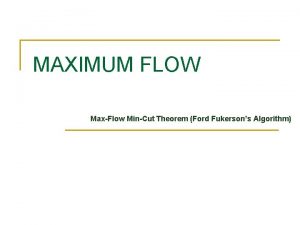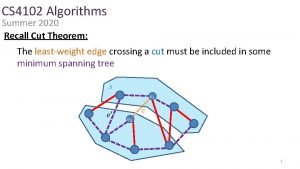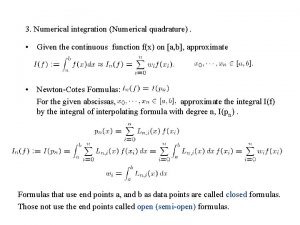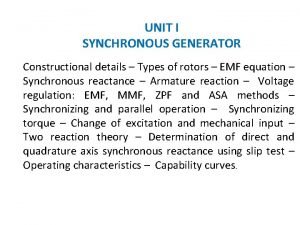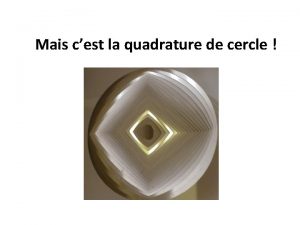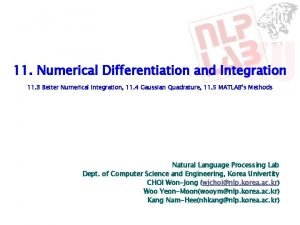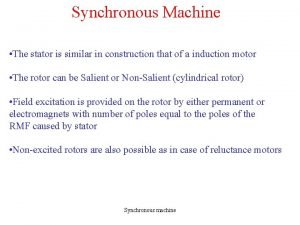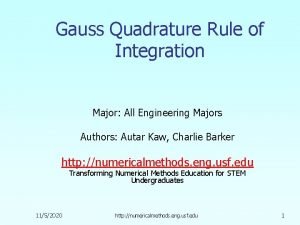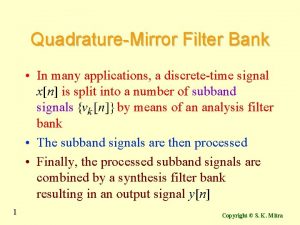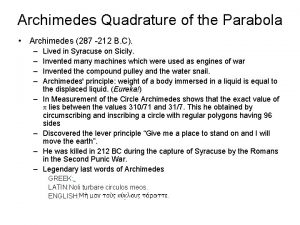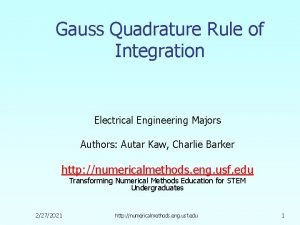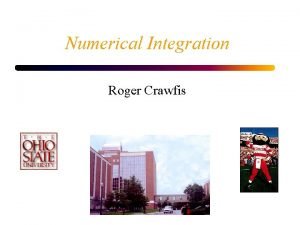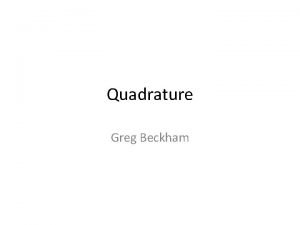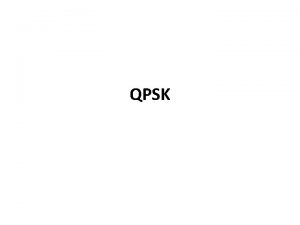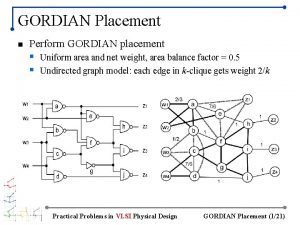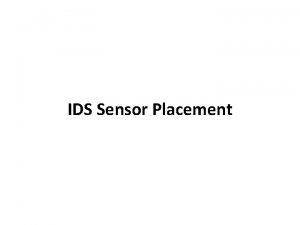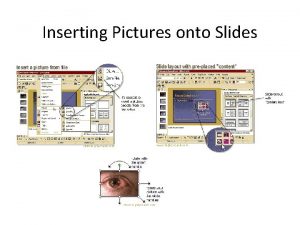Mincut Placement n Perform quadrature mincut onto 4












- Slides: 12

Mincut Placement n Perform quadrature mincut onto 4 × 4 grid § Start with vertical cut first undirected graph model w/ k-clique weighting thin edges = weight 0. 5, thick edges = weight 1 Practical Problems in VLSI Physical Design Mincut Placement (1/12)

Cut 1 and 2 n First cut has min-cutsize of 3 (not unique) § Both cuts 1 and 2 divide the entire chip Practical Problems in VLSI Physical Design Mincut Placement (2/12)

Cut 3 and 4 n Each cut minimizes cutsize § Helps reduce overall wirelength Practical Problems in VLSI Physical Design Mincut Placement (3/12)

Cut 5 and 6 n 16 partitions generated by 6 cuts § HPBB wirelength = 27 Practical Problems in VLSI Physical Design Mincut Placement (4/12)

Recursive Bisection n Start with vertical cut § Perform terminal propagation with middle third window Practical Problems in VLSI Physical Design Mincut Placement (5/12)

Cut 3: Terminal Propagation n Two terminals are propagated and are “pulling” nodes § Node k and o connect to n and j: p 1 propagated (outside window) § Node g connect to j, f and b: p 2 propagated (outside window) § Terminal p 1 pulls k/o/g to top partition, and p 2 pulls g to bottom Practical Problems in VLSI Physical Design Mincut Placement (6/12)

Cut 4: Terminal Propagation n One terminal propagated § Node n and j connect to o/k/g: p 1 propagated § Node i and j connect to e/f/a: no propagation (inside window) § Terminal p 1 pulls n and j to right partition Practical Problems in VLSI Physical Design Mincut Placement (7/12)

Cut 5: Terminal Propagation n Three terminals propagated § Node i propagated to p 1, j to p 2, and g to p 3 § Terminal p 1 pulls e and a to left partition § Terminal p 2 and p 3 pull f/b/e to right partition Practical Problems in VLSI Physical Design Mincut Placement (8/12)

Cut 6: Terminal Propagation n One terminal propagated § Node n and j are propagated to p 1 § Terminal p 1 pulls o and k to left partition Practical Problems in VLSI Physical Design Mincut Placement (9/12)

Cut 7: Terminal Propagation n Three terminals propagated § Node j/f/b propagated to p 1, o/k to p 2, and h/p to p 3 § Terminal p 1 and p 2 pull g and l to left partition § Terminal p 3 pull l and d to right partition Practical Problems in VLSI Physical Design Mincut Placement (10/12)

Cut 8 to 15 n 16 partitions generated by 15 cuts § HPBB wirelength = 23 Practical Problems in VLSI Physical Design Mincut Placement (11/12)

Comparison n Quadrature vs recursive bisection + terminal propagation § Number of cuts: 6 vs 15 § Wirelength: 27 vs 23 Practical Problems in VLSI Physical Design Mincut Placement (12/12)
 Maxflow mincut
Maxflow mincut Mincut
Mincut Sum in quadrature
Sum in quadrature Dark lamp method
Dark lamp method Quadrature du cercle
Quadrature du cercle Gauss quadrature table
Gauss quadrature table Advantages of self control synchronous motor
Advantages of self control synchronous motor State two point gaussian quadrature formula
State two point gaussian quadrature formula Quadrature mirror filter bank
Quadrature mirror filter bank Trapezoid integral formula
Trapezoid integral formula Quadrature of the parabola
Quadrature of the parabola Gaussian quadrature formula
Gaussian quadrature formula Gauss quadrature formula
Gauss quadrature formula
